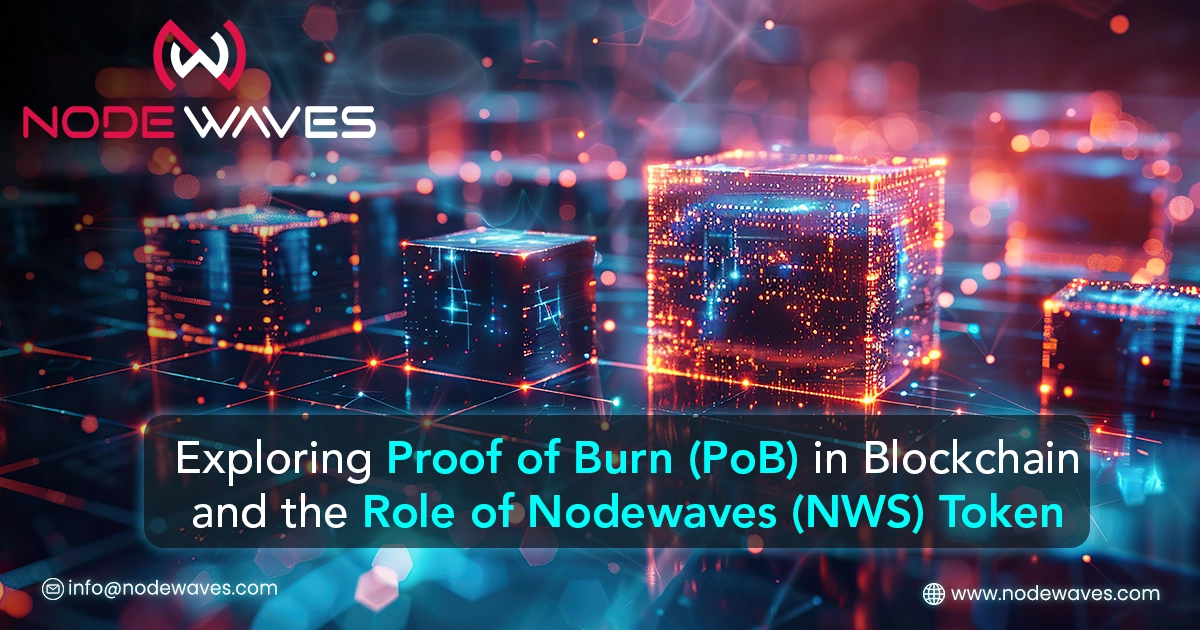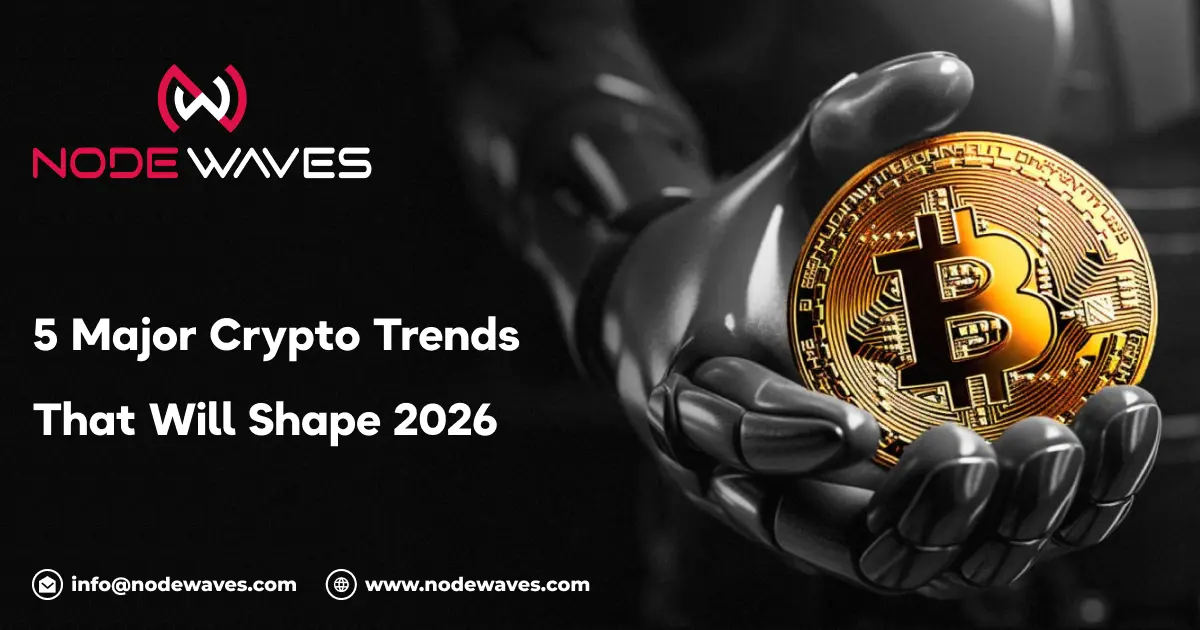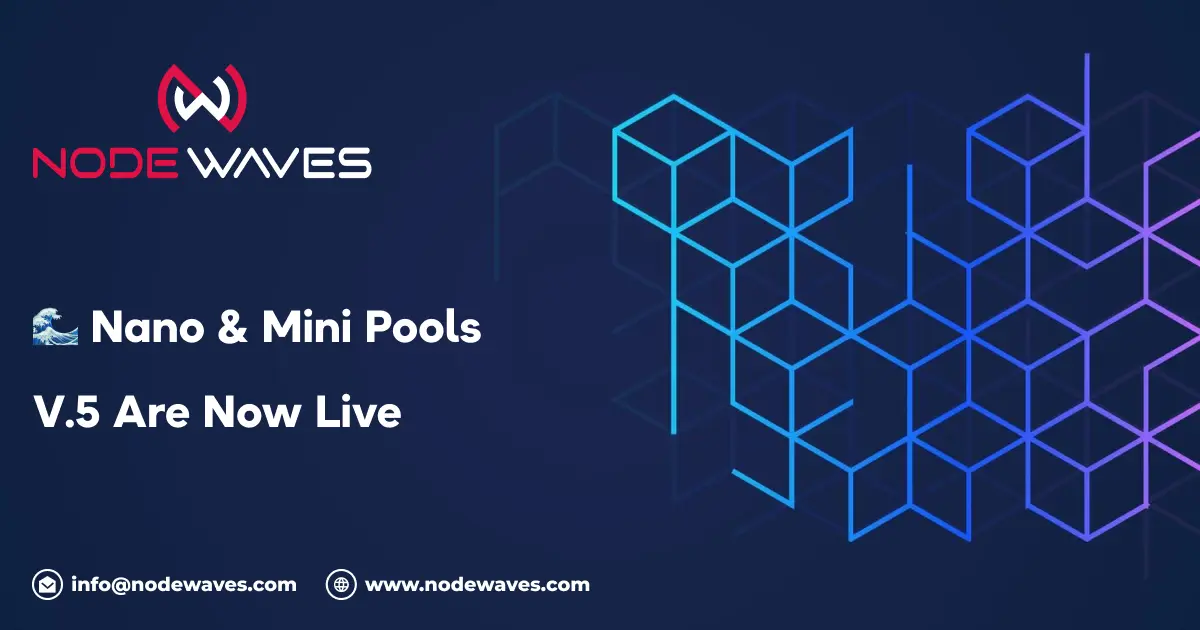Exploring Proof of Burn (PoB) in Blockchain and the Role of Nodewaves (NWS) Token
Introduction
In the complex realm of blockchain technology, evolving consensus mechanisms are continuously reshaping the digital landscape. One such innovative protocol is Proof of Burn (PoB), developed to address the limitations inherent in traditional consensus algorithms like Proof of Work (PoW). This article delves into the PoB algorithm, elucidating its mechanisms, advantages, and how Nodewaves (NWS) token leverages this protocol to offer distinctive investment opportunities.
1. Unveiling Proof of Burn (PoB)
Introduction to PoB
Proof of Burn (PoB) is a unique consensus mechanism in the blockchain world. Unlike traditional methods, PoB requires miners to "burn" a portion of their tokens to gain the right to mine new blocks. This innovative approach aims to create a more sustainable and equitable system compared to conventional methods like Proof of Work (PoW).
Historical Context and Development
PoB was conceptualized to address the growing concerns over the environmental impact and resource intensity of PoW. By introducing a method that involves the deliberate destruction of tokens, PoB offers a more energy-efficient alternative. The concept has evolved to become a viable solution for various blockchain networks, emphasizing sustainability and fairness.
2. The Mechanism of PoB
How PoB Works
In the PoB protocol, miners send a specified amount of tokens to an unspendable address, commonly known as a burn address. These addresses are publicly verifiable and lack private keys, ensuring that the burnt tokens are permanently removed from circulation. The act of burning tokens demonstrates a miner’s commitment to the network, with the probability of being chosen to add a new block directly correlating to the amount of tokens burnt.
The Role of Burn Addresses
Burn addresses play a crucial role in the PoB mechanism. They ensure transparency and verifiability in the burning process, reinforcing the integrity of the system. By making these addresses publicly accessible, the network can easily verify the commitment of miners, fostering trust and accountability.
3. Comparative Analysis: PoW vs. PoS vs. PoB
Proof of Work (PoW)
PoW is the original consensus mechanism used by many blockchain networks, including Bitcoin. It requires miners to solve complex mathematical problems, consuming substantial computational power and energy.
Proof of Stake (PoS)
PoS, on the other hand, selects validators based on the number of tokens they hold and are willing to stake as collateral. This method reduces the need for extensive computational power but introduces the necessity for token staking.
Proof of Burn (PoB)
PoB offers a distinct approach by eliminating the need for both heavy computational power and staking. By burning tokens, it reduces energy consumption and fosters a more sustainable and efficient system.
Environmental Impact Comparison
Among the three, PoB stands out as the most environmentally friendly option. It significantly reduces energy consumption compared to PoW and avoids the complexities associated with PoS staking.
4. Nodewaves (NWS) Token and PoB
Integration of NWS with PoB
Nodewaves (NWS) token seamlessly integrates with the PoB protocol, enhancing its operational efficiency and investment potential. By leveraging the Polygon network, NWS ensures expedited transactions and reduced fees, creating a user-friendly experience for stakeholders.
Benefits for Token Holders
NWS token holders benefit from the strategic burning of tokens, which secures the network and positions them to receive potential rewards. This integration enhances the overall value proposition for investors.
Security Enhancements
The integration of NWS with PoB also strengthens the network's security. By requiring miners to burn tokens, the protocol discourages malicious activities and ensures that only committed participants contribute to the network.
5. Practical Application of PoB
Real-World Scenario
Consider a scenario involving six miners, each eager to add their transaction block to the network. To do so, they must burn a portion of their tokens. For instance, John, who burns the most tokens, earns the opportunity to add his block. If John’s block is validated by the network, he secures the reward. However, if the block is deemed invalid, the miner with the second-highest burned tokens, Ross, gets a chance.
Miners' Commitment
The PoB mechanism ensures that miners remain committed to the network by requiring them to burn tokens regularly. This commitment is crucial for maintaining network integrity and fostering long-term stability.
Validation Process
The validation process in PoB involves a thorough examination of the burned tokens and the miner's proposed block. This ensures that only valid blocks are added to the blockchain, enhancing the network's reliability.
6. Equity Among Network Participants
Fairness in PoB
PoB fosters fairness by encouraging periodic burning of tokens, thus preventing early adopters from monopolizing the network. This cyclical reduction in virtual mining power ensures that both new and seasoned participants engage in regular transactions, promoting continuous network activity and stability.
Encouraging New Participants
By ensuring a level playing field, PoB attracts new participants to the network. This inclusivity is essential for the growth and sustainability of the blockchain ecosystem.
7. Advantages of PoB
Energy Efficiency
PoB minimizes power consumption, making it an eco-friendly alternative. This efficiency is crucial in addressing the environmental concerns associated with traditional consensus mechanisms.
Sustainability
The PoB mechanism obviates the need for resource-intensive hardware, ensuring long-term viability. This sustainability makes PoB an attractive option for future blockchain developments.
Incentivizing Regular Transactions
Miners are incentivized to maintain consistent activity within the network, promoting ongoing engagement and stability. This regular participation is essential for the network's health and longevity.
8. Limitations of PoB
Wealth Concentration
The mechanism necessitates affluent participants to burn tokens, potentially skewing opportunities. This concentration of wealth could lead to an imbalance in the network's dynamics.
Scalability Concerns
PoB has yet to demonstrate efficacy on a large scale. As the network grows, scalability could become a significant challenge, necessitating further innovations.
Slower Validation
The process of validating transactions can be slower compared to other algorithms. This slower pace could impact the network's efficiency and user experience.
9. Future Prospects of PoB
Innovations on the Horizon
The future of PoB looks promising with ongoing innovations aimed at enhancing its scalability and efficiency. These advancements will be crucial in ensuring that PoB remains a viable consensus mechanism.
Potential for Mainstream Adoption
As blockchain technology continues to evolve, PoB represents a paradigm shift towards sustainable, secure, and equitable consensus mechanisms. Its potential for mainstream adoption could reshape the landscape of digital transactions.
10. Conclusion
Summary of Key Points
This discourse elucidates the Proof of Burn (PoB) mechanism, illustrating its operational nuances and comparative advantages over PoW and PoS. The Nodewaves (NWS) token, with its integration into the PoB protocol, epitomizes the potential for innovative investment strategies within the blockchain ecosystem.
Call to Action for Further Education
As blockchain technology continues to evolve, it's essential to stay informed about new developments and innovative protocols like PoB. Investing in education and understanding these mechanisms can provide valuable insights and opportunities in the digital age.






